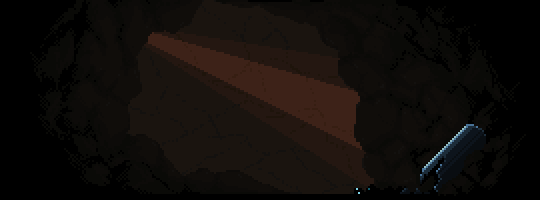Treatise: Translating the Avohkii
: Part 3 :
Take a stroll through the previous posts for all the juicy, juicy previous details. For now, here’s where we’re at in the translation process:
mapaku ke-whenu-ka kitu ak-ila ahano nano atuana makuta taka
The bolded parts have been translated as follows:
The string ke-whenu-ka consists of the word whenu(a) "hidden/secret underground" modified by two particles: the basic locative particle manifesting as ke- "in/at/on" and the origin particle manifesting as -ka "from, out of". The entire complex therefore translates, roughly, to "from within (a) secret underground (place)".
The string ak-ila consists of an imperative (command) form of the verb il-ya (< el-ya) "to seek out", modified by the 3rd-singular object pronoun particle ak- "him/her/it". The entire complex translates to "seek out him/her/it".
Combined, these yield an (incomplete) meaning of “Seek out (a thing/person) originating from within a secret underground (place)”.
Now that you’re up to speed, for the first half of the inscription, all that’s left is mapaku and kitu. We also still need to identify the thing that ke-whenu-ka describes and the thing that must be sought out. Let’s start with kitu: because of its position between ke-whenu-ka and ak-ila, it seems reasonable to group kitu into the same syntactic/semantic unit with them, and also to take kitu as a candidate for the thing modified by ke-whenu-ka and the overt object of ak-ila. Whatever the meaning of kitu, I’d therefore expect it to incorporate some notion of “thing”, “type”, “kind”, “person”, etc., if we want to stay consistent with the previously-translated material. Unfortunately, there’s no ready-to-hand dictionary entry to help us out, and the deciphering of kitu will, therefore, be a matter of reconstruction. Here’s what I propose:
kitu |n.| individual, individuality; lit. “spirit (that is) part (of a whole)” [kitu < kī-tu, from the particle kī “part, piece, portion of” and tu “spirit/essence; result of process”]
Both of these elements, kī and tu, are (I think) pretty well-motivated in Matoran etymology, so I don’t feel too bad about applying them here to create a previously unattested term. Even so, tying everything together once again, we have:
... ke-whenu-ka kitu ak-ila “Seek out an individual originating from within a secret underground (place)”
This leaves only mapaku. A surface glance brings up possibilities using ma(t) “mastery, control”, pa “elemental stone”, and perhaps aku “sight, vision”, but no cohesive translation—partly because there are a thousand different ways we could go with this one. Let’s try a slightly different tack: returning to the actual audio from MoL. If we can rely on Nokama’s pronunciation to some extent, there may be something significant to be found within the actual spoken data. And in fact, I believe there is: In the audio, there is a distinct pause after Nokama pronounces mapaku—almost as if this term is an introductory word—and the rest of the inscription seems to occupy its own intonational unit as well. On those grounds, I will choose to analyze mapaku as something disconnected from the rest of the clause—something used, say, to indicate the start of the text. Does that get us any further? Might not seem like it, but it’s a start. After some really arbitrary reconstructive etymology, here’s the proposal:
mapaku |n.| (archaic) reader; lit. "master(y) of reading/letters" [mapaku < ma-paku, from ma(t) "mastery, control" and the stem-compound paku “reading; lit. ‘sight/vision of carvings’”. Frequently appears in inscriptions as a vocative element introducing a command or exhortation for the reader of a text]
And here’s the original source for paku, as reference:
paku |stm.cmpd| reading; lit. "sight/vision of carvings" [paku < pe-aku, from pe “carve, chip; carving, sculpting, paring down” and aku “sight, vision", yielding an original sense of “to see carvings; to look at carved letters”]
Okay, let’s put the final nail in the coffin for this half of the inscription:
Mapaku ke-whenu-ka kitu ak-ila
“Reader, seek out an individual originating from within a secret underground (place)”
Whew. We’re only halfway there, but at this point we can make some comments on the relevance of this translation to the overall context of the Bionicle storyline. As hinted in the previous posts, I do indeed have an ulterior motive for following this particular path of translation: We must consider who inscribed this text on the Avohkii and why they did it. I have so far theorized that the inscription contains some kind of instructions for someone who might possess the Avohkii at a future point after its creation. We’ve already noted that the mask was made in Artakha, and that its purpose was to counteract a rebellious Brotherhood of Makuta should that ever become a reality.
Therefore, the Avohkii was always meant to be the catalyst for the creation of a Toa of Light, and so it makes sense that it was intended to be used on an Av-Matoran. Where did the vast majority of the Av-Matoran in the MU originally live? That’s right: in secret underground cities beneath the surface of the Southern Continent.
Thus, the phrase ke-whenu-ka kitu would literally be a stand-in for Av-Matoran: an individual who originates from a secret underground place. Really, the only reason I latched onto this particular avenue as a guide for the translation was because I originally translated whenua as "secret underground (place)" all those years ago. Happy coincidence, I guess. Who would’ve thought? And if all of this crazy theorizing is to be believed, the inscription seems to take on the form of a riddle. Who knows? In my own headcanon, I’ve imagined a chuckling Velika scratching these letters into the otherwise-flawless surface of the mask. But the extent of the riddle-making is yet to be seen. The other half of the inscription still needs translating!
Next time.
-
 6
6


6 Comments
Recommended Comments